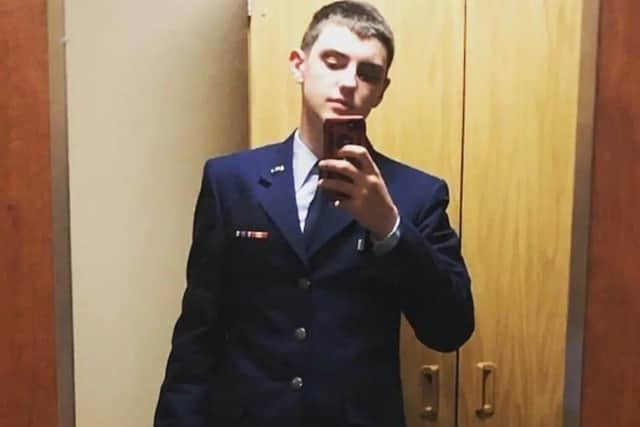Jack Teixeira: US guardsman held over release of classified military documents
Investigators believe that the guardsman, who specialises in intelligence, led the online chat group where the documents were posted.
Mr Garland identified the guardsman as 21-year-old Jack Teixeira and said he would be charged with the unauthorised removal of classified national defence information.
Advertisement
Hide AdAdvertisement
Hide AdFBI agents converged on Thursday at Teixeira’s Massachusetts home and heavily armed tactical agents took Teixeira, who was wearing a T-shirt and shorts, into custody outside the property “without incident”, Mr Garland said.


Law enforcement officials roped off the street near the house.
The New York Times, which first identified Teixeira on Thursday, said that a man who had been standing outside Teixeira’s home earlier said that “he needs to get an attorney if things are flowing the way they are going right now. The Feds will be around soon, I’m sure”.
The emergence of Teixeira as the apparent primary suspect is bound to raise questions about how the highest-profile intelligence leak in years could have been caused by such a young, low-ranking service member.
The Biden administration has scrambled for days to contain the fallout from the leaked information, which has publicised potential vulnerabilities in Ukraine’s air defence capabilities and exposed private assessments by allies on an array of intelligence matters.
The National Guard did not confirm his identity but said in a statement: “We are aware of the investigation into the alleged role a Massachusetts Air National Guardsman may have played in the recent leak of highly-classified documents.”
Air Force Brigadier General Pat Ryder, the Pentagon spokesman, referred all questions about the case to the Justice Department. But he said: “We have rules in place. Each of us signs a non-disclosure agreement. This is a criminal act, a wilful violation of those.”
The Biden administration has been working to assess the diplomatic and national security consequences of the leaked documents since they were first reported last week.
Advertisement
Hide AdAdvertisement
Hide AdA top Pentagon spokesman told reporters earlier this week that the disclosures present a “very serious risk to national security” and the Justice Department opened an investigation to identify the person responsible.
“We’re getting close,” President Joe Biden told reporters in Ireland on Thursday. He said that though he was concerned that sensitive government documents had been disclosed, “there’s nothing contemporaneous that I’m aware of that is of great consequence”.
It is possible the leak may have started on a site called Discord, a social media platform popular with people playing online games.
The Discord site hosts real-time voice, video and text chats for groups and describes itself as a place “where you can belong to a school club, a gaming group, or a worldwide art community”.
In one of those forums, originally created to talk about a range of topics, members would debate the war in Ukraine.
According to one member of the chat, an unidentified poster shared documents that the poster claimed were classified, first typing them out with the poster’s own thoughts then, as of a few months ago, uploading images of folded papers.
Discord has said it is cooperating with law enforcement.
There are only a few ways the classified information that was leaked could have been accessed, which may provide critical clues as to who is responsible. Typically in classified briefings, as with the slides that were placed on Discord, the information is shared electronically.
That is done either through secure computer terminals where users gain access based on their credentials or through tablets that are distributed for briefings and collected afterward.
Advertisement
Hide AdAdvertisement
Hide AdIf the slides need to be printed out instead, they can only be sent to secured printers that are able to handle classified documents — and that keep a digital record of everyone who has requested a printout.
It is those digital clues like the record of printouts that may help investigators hone in on who took the documents.
Comments
Want to join the conversation? Please or to comment on this article.